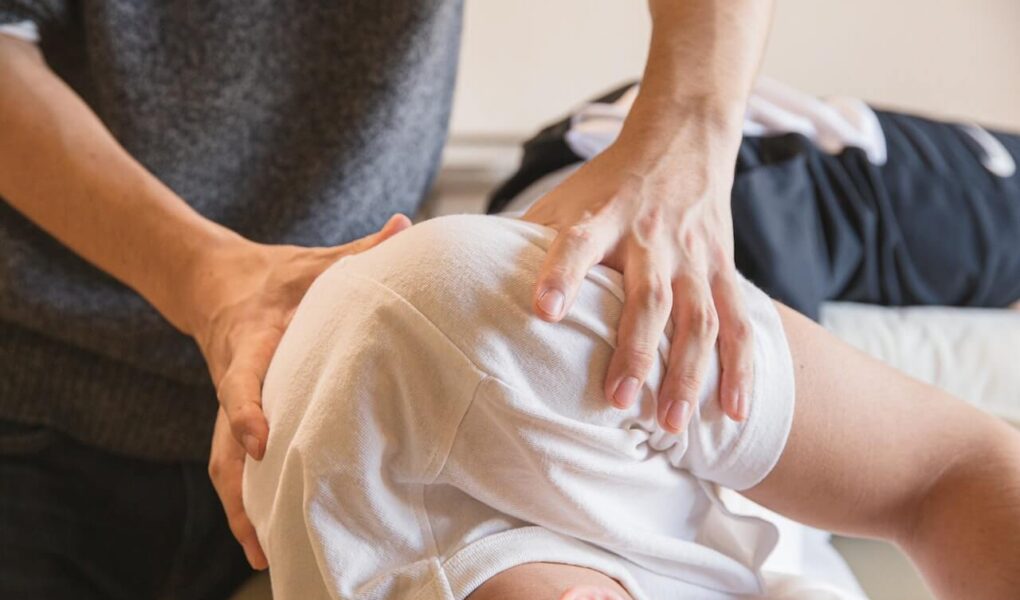Contents
Vacuum therapy, also known as vacuum massage or vacuum cupping, is a traditional therapeutic technique that involves the use of suction cups to create a negative pressure on the skin’s surface. This practice has gained popularity in recent years for its potential benefits in promoting circulation, relieving muscle tension, and improving overall well-being. While traditionally performed by trained professionals, many individuals are curious about whether they can perform vacuum therapy on themselves. In this article, we will delve into the world of vacuum therapy, discussing its benefits, techniques, and important precautions to consider if you’re interested in trying it at home.
Understanding Vacuum Therapy
Vacuum therapy is rooted in ancient practices, with evidence of its use in traditional Chinese and Middle Eastern medicine. The therapy involves placing specially designed cups onto the skin and using a suction mechanism to create a vacuum effect. The suction draws the skin, tissues, and underlying muscles into the cup, promoting increased blood flow and lymphatic circulation in the treated area.
Benefits of Vacuum Therapy
- Improved Blood Circulation: The negative pressure created by the suction cups can help dilate blood vessels and enhance blood circulation. Improved blood flow brings oxygen and nutrients to tissues and facilitates the removal of waste products, aiding in tissue repair and overall health.
- Pain Relief: Vacuum therapy is believed to stimulate the release of endorphins, which are natural painkillers produced by the body. This can lead to temporary relief from muscle soreness, tension, and certain types of pain.
- Reduction in Muscle Tension: The suction created by vacuum therapy can help stretch and relax muscles, potentially alleviating muscle knots and tension. This can be particularly beneficial for individuals with chronic muscle pain or tightness.
- Lymphatic Drainage: The gentle pulling action of vacuum therapy can stimulate the lymphatic system, which plays a vital role in removing waste and toxins from the body. Improved lymphatic drainage can contribute to reduced swelling and a healthier immune system.
- Cellulite Reduction: While scientific evidence on this claim is limited, proponents of vacuum therapy suggest that it may help temporarily reduce the appearance of cellulite by promoting blood flow and tissue regeneration.
Performing Vacuum Therapy on Yourself
While vacuum therapy is commonly administered by trained practitioners, some individuals are interested in trying it at home. Here’s a step-by-step guide:
- Choose the Right Equipment: Specialized silicone or glass cups designed for vacuum therapy are available. Make sure to choose cups that are safe and suitable for home use.
- Prepare Your Skin: Cleanse the area where you plan to apply the cups to ensure proper adhesion.
- Apply Oil: Apply a thin layer of massage oil or lotion to help the cups glide smoothly over the skin and create an effective seal.
- Create Suction: Press the cup onto the skin and create a vacuum by squeezing the cup’s sides or using a handheld pump. The skin should be drawn slightly into the cup, but avoid excessive suction to prevent bruising.
- Move the Cups: You can use a sliding or stationary technique. In sliding, gently move the cups in a massage-like motion. In stationary, leave the cups in place for a few minutes before moving to another area.
Precautions and Considerations
- Bruising: Applying too much suction or leaving cups in one place for too long can lead to bruising. Start with minimal suction and short sessions to avoid this.
- Skin Sensitivity: Individuals with sensitive or damaged skin should exercise caution, as the suction could cause irritation.
- Medical Conditions: If you have a medical condition, consult a healthcare professional before attempting vacuum therapy, especially if you’re on blood-thinning medications or have skin disorders.
- Pregnancy: Pregnant individuals should avoid vacuum therapy, especially on the abdominal area, without consulting a healthcare provider.
Can you do vacuum therapy on yourself
Yes, it is possible to perform vacuum therapy on yourself, but it’s important to do so with caution and proper understanding of the procedure. Vacuum therapy, also known as cupping therapy, involves creating a vacuum within specially designed cups and placing them on the skin to create suction. This technique is often used for various purposes, including relieving muscle tension, improving blood circulation, and promoting relaxation.
Here’s a general guideline on how to perform vacuum therapy on yourself:
Materials Needed:
- Cupping set: You can purchase cupping sets online or at health stores. These sets typically include cups of different sizes and a vacuum pump.
- Massage oil or lotion: This helps to ensure the cups glide smoothly on your skin.
- Towel or cloth: To clean your skin before and after the therapy.
Steps:
- Prepare the Area: Choose the area of your body where you want to apply the cups. It’s usually done on larger muscle groups like the back, shoulders, or thighs.
- Cleanse the Skin: Wash and dry the chosen area thoroughly. This helps prevent infection and ensures good suction.
- Apply Oil/Lotion: Apply a small amount of massage oil or lotion to the skin. This helps the cups move more easily.
- Place the Cups:
- Hold the cup upright and place the open end against your skin.
- Use the vacuum pump to remove the air from the cup, creating a suction effect. You can follow the instructions provided with the cupping set to properly create the vacuum.
- The cups can be left stationary or moved around while maintaining suction, depending on your preference and comfort level.
- Duration and Pressure:
- Begin with light suction to get accustomed to the sensation.
- You can adjust the level of suction based on your comfort. It’s normal to experience a pulling or stretching sensation on the skin.
- Start with sessions of around 5-10 minutes and gradually increase the duration as you become more familiar with the therapy.
- After the Session:
- Gently release the suction by pressing on the cup’s edge to allow air to enter.
- Remove the cups from your skin.
- Post-Care:
- Cleanse your skin with a damp cloth to remove any residual oil or lotion.
- It’s common to have temporary discoloration or marks where the cups were applied, but these usually fade within a few days.
Safety Precautions:
- Avoid applying cups over areas with open wounds, inflamed skin, or varicose veins.
- Do not use vacuum therapy on your face or other sensitive areas without proper guidance.
- If you have any medical conditions or concerns, consult a healthcare professional before attempting vacuum therapy.
Remember that everyone’s body responds differently, so start with caution and pay attention to how your body reacts. If you’re uncertain or have any concerns, it’s a good idea to consult a healthcare provider before trying vacuum therapy on yourself.
Conclusion
Vacuum therapy can offer several potential benefits when performed correctly and cautiously. While it’s possible to perform vacuum therapy on yourself at home, it’s crucial to be aware of the proper techniques, potential risks, and considerations. Consulting a trained practitioner or healthcare provider before starting a vacuum therapy regimen is advisable, especially if you have any underlying health conditions. With the right approach, vacuum therapy can be a valuable addition to your self-care routine, promoting relaxation, improved circulation, and overall well-being.




